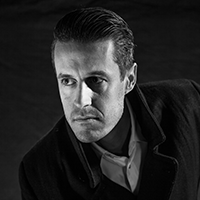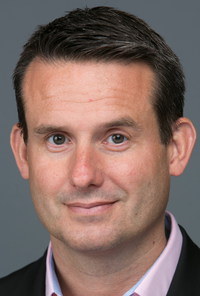How to Not Suck at a Group Presentation
 Most people suck at presenting to big groups. It’s a shame because the ability to nail these presentations at key conferences can be once-in-a-lifetime opportunities to influence journalists, business partners, potential employees, customers and VCs.
Most people suck at presenting to big groups. It’s a shame because the ability to nail these presentations at key conferences can be once-in-a-lifetime opportunities to influence journalists, business partners, potential employees, customers and VCs.
This was evident at the Twiistup pre-event company pitch last week at UCLA. Francisco Dao came up with the idea of letting 10 companies that weren’t selected for Twiistup to do a presentation the night before to a group of people and let the audience pick one company to win the final slot at Twiistup. I was the judge. It was mostly painful. I’m not saying the companies were bad – many were not. But their presentations were not well prepared, not well delivered and lacking in a compelling story that captured the imagination of the audience (or me).
So I thought I’d write a piece on how to not suck when you give a presentation. I spoke about this yesterday on Fox Business News. I’ll put up the video when they post it on their website.
1. Show some energy! – No great presentation can be delivered like a conversation. You’re not lecturing to a college class, you’re not at a cocktail party and you’re not chatting with a small group in a board meeting. You’re on stage! People are sitting in their chairs for too long – most of them squirming. Many of them have their iPhones and laptops ready to command their attention the moment that you start sucking. You’re on stage – act like it! Get out of your comfort zone. You need to be an order of magnitude more perky than you would feel comfortable with in a normal conversation.
Project your voice. Use your hands. Don’t mumble. Speak quickly sometimes. Speak slowly to emphasize a point. This is called “vocal variety” and it’s critical. Speaking in a monotone voice is, well, monotonous. A friend of mine once said about public speaking, “it’s far more interesting to the audience if you’re loud and evocative than if you’re actually making great points.” This is so true. Even better when you’re: loud, evocative and have compelling content.
If this isn’t naturally you then you need to learn it. Go join your local Toastmasters. It’s the best way to learn. It’s how I did. Or take an acting class. No joke. If you care about being a compelling presenter you need to work on it if it doesn’t already come naturally.
2. Tell a story – Every great presentation tells a story. Stories have starts, middles and ends. They are human and touch emotions. The bring your product to life. They are not buzzwords or bullet points. Why do people think that buzzwords are going to interest audiences?
I always tell people that if you’re not creative in how you tell stories the simplest way to do so is by telling “a day in the life” of your potential user. Establish the persona of the person who would be using your products. Help us to get to know him or her. Tell us what their life is like without your product – how they struggle. Tell us about the breakthrough they’ll have when they’re using your product.
NEVER lead with features. No one gives a shite about your features other than your product manager and your developers. If you demo your product (which is always great) then tell us part of the story while you’re demo’ing. Talk us through how the person using your product is benefiting through your technology. Don’t: show us every single feature – we don’t care. Don’t: tell us, “and now I enter my name, and then I put in my email address, and then I can pull in my social graph through Facebook Connect, and then then I can select the button here to Tweet out my actions on Twitter.” Zzzzzzzzz.
3. Learn how to structure – Telling a story is one thing. But make sure that you’re structured in the way you communicate. You need to break down your message into key components. It is generally best if you have a “theme” or “thesis” which if the main point you want to get across. You then need sub-themes or “supporting evidence” to reinforce your key theme. These are weaved through your story.
If you’re not naturally talented at good, logical structures you may consider purchasing The Pyramid Principle by Barbara Minto. She wrote the book that inspired the way that people at McKinsey and Accenture do presentations. OK, hold back on your consulting humor. But seriously her book is spot on.
3. Know your audience - I always try to find out something about the audience before I present. I recently spoke at the business school at UCSD. Before the event I wanted to find out what I could about the students. I found out that they were older than most typical MBA programs. They had more advanced degrees. 50% of them were interested in life sciences, 50% in tech (e.g. much more focused on life sciences than most audiences where I present).
I was the keynote for a dinner. I walked around to a few tables and I asked students what would interest them. I spotted my fellow VC Leo Spiegel (from Mission Ventures) who had spoken previously to the same group and asked about his experiences.
My choices – talk about the VC industry and where it is heading (which is what the dean asked me to cover), talk about how to start companies (which is partly what Lada Rasochova, the director of the entrepreneurship program asked me to cover), talk about how to get into VC (which a few students asked me to cover) or give advice on what the Rady School’s venture fund should think about when investing (the event was a kick off for this new fund).
My constituencies were broad and I felt like going deep into one single area would have bored large groups of the people on any topic I picked. So I decided at the last minute to do a very quick & punchy version of all of them. I had prepared notes in advance for any of the topics because I felt so confused before coming on my remit. I think (?) it went down pretty well. Usually you can tell when it does and when it doesn’t.
I also sometimes start a speech by asked for people to raise their hands if they fit a certain demographic. ”Raise your hand if you’re an entrepreneur, raise your hand if you plan to raise venture capital in the next year, raise your hand if you’re a service provider to the startup industry,” etc. I can then change my focus based on the results. But ONLY do this if you plan to adjust your approach. If you don’t think you’re skilled enough to do it then asking my make you more nervous at the last minute than you need to be. Also, asking is not appropriate at a marquee conferences like TechCrunch50, DEMO, Twiistup and the like.
4. Be unique / memorable – The stand out presentation at the actual Twiistup event was Geodelic evidenced by their winning the “audience award” for best presentation. The CEO, Rahul Sonnad, played the ukulele and sang a song about what their product did. He did a great parody of a heavy Indian accent. They had slides with moving images and music. They planted fake questions in the audience with Geodelic team members posing as normal audience members shouting out something like, “can’t you just tell us what this means in normal words?”
OK, it was WAY over the top and I don’t recommend it for most people. Rahul and Co. obviously have a great sense of humor and pulled it off. But for you it is worth thinking about what you can do in more humble ways to be unique – memorable. Remember that at many of these shows you’ll be up against 9 or 10 other companies that have also been selected (or in the case of TC50 – 49 other companies!). They all start to blend together. Do SOMETHING that makes you stand out. For almost everybody – DO NOT attempt humor. If you’re not already the funniest person you know in social situations you’re not likely to be funny on stage. Nothing is worse than bombing at jokes on stage.
5. KISS – (keep it simple, stupid) The goal of the presentation is just to give the audience a basic sense of what you do and why it matters. Don’t confuse this with a tour-de-force education on the finer details of how your company operations. They simply need to know: who has a problem? how are you solving this problem? why does this matter? how big of a problem is it – really?
So I recommend that you GREATLY simplify your message. The conventional wisdom is that the audience can only remember 3 simple things about any presentation 10 minutes after they’ve seen it. I think 3 might be an exaggeration. You’re there to leave an impression – not to educate. It’s OK to throw in some facts & figures that people won’t remember because giving people numbers helps them understand the magnitude of the problem you’re solving.
6. Summarize – The old line about presenting was, “tell us what you’re going to tell us, tell us and then tell us what you told us.” If you literally do this it will be very boring. But the core idea is right. If you want the audience to remember what you covered you need to be slightly repetitive with your key take-away message. I like to have an “anchor line” which is my big take-away point and have it repeated three times throughout the presentation.
Example: you’re a fitness tracking company like FitOrbit. You might say early on, “75% of Americans are overweight. They’ve tried diet plans but nothing works. In fact, they spent $2.4 billion on such plans last year. You manage what you measure so the key to solving the problem is getting people used to tracking their performance. You need to make it easy. We’re offering an online community that connects personal trainers and people who want to get fit.” Then you go deeper into the problem and the solution. You remind people that it’s a big industry and people need to get online and track their eating and fitness to be successful. Connecting to a trainer helps keep you in line.
Closing line: “FitOrbit is an online community for the $2.4 billion diet & fitness industry that connects people who want to be in better shape with trainers who can help them online. Remember, you only manage what you measure.”
All numbers above made up. Actual lines used are not from FitOrbit, they’re from me just for an example. The point is – you need to revisit your key theme repeatedly for it to stick and you NEED to close with it. Don’t make the audience think too hard – spoon feed them.
7. Make it visual – Bullet point were the worst thing ever created for group presentations. Nobody wants to read your text on a big screen. If you’re going to do that why not just print out your presentation and leave it on my seat. Far more expedient. You presentation should have almost no bullet points. The way to capture an audience’s attention is visually. Pictures set the image, your voice tells what would have been in the bullet points.
You need to memorize what you’re going to say when each image comes up. If you wants some words to support the image – fine. But make them sparse and make the B-I-G! If you really get nervous and are afraid you’ll forget your lines have one 3X5 cue card in your hands for each slide. Don’t write sentences on the – only key words to help you remember what you’re going to say.
One strategy I often employ. I often do two versions of my presentations – one that has mostly images and one with a lot of supporting text. I use the latter if I send out the deck after the presentation. Sending out a follow up deck with a lot of images is silly – no one remembers the “meat.” But writing lots of words on a slide you put up on a big screen so that later people will be able to understand what you said is also suboptimal. My dual approach solves both needs.
8. For fawk sake, practice! – It was clear many of the people who presented at Twiistup’s Pre-Demo Night hadn’t practiced enough. It is not sufficient to write yourself notes and read them before hand. You actually need to do a dry run in front of friends, colleagues and others. People don’t like to do this because it feels funny “pretending” to deliver a presentation. That’s not you. You’re going to read out your points like it is for real. You’re not going to stop and go out of character and say, “oh, that didn’t sound right. I’m gonna do this page over from the start.” You wouldn’t say that on stage.
There is only one way to know how your presentation will go – to do it in advance. Get real feedback from your listeners. Ask them to be harsh. Better that you know now than in front of 300 people.
9. Stick to your fracking time – If you’ve been given 6 minutes then plan a presentation that can be done in 5. Trust me – whatever amount of time you’ve gone over in practice it will be longer when you’re on stage. And if you’re done a minute early – bravo! The audience will love you. The best way to manage to a time is: a) practice with a stop watch and b) have less slides than you think you’ll need. There is nothing worse than a presentation that runs over the end of the allotted time. Oh wait, there is. A presentation that is CUT OFF because it ran long. And you don’t get to finish your points or summarize at the end. Don’t be this person.
10. Have a “Plan B” – the show must go on – As was evidenced at the UCLA event and at many, many events I’ve been to – there are times when you have technical difficulties. The show must go on. Have a plan b that you can fall back on. Where you planning to demo? Fine, but if it isn’t working you need to call an audible. If it’s a really important show there’s an easy solution. Have a PowerPoint deck with screen shots that you can walk through. Simply say, “Obviously I preferred to do a live demo but I have a deck with screen shots just in case this happened. Whew.”
11. Have someone else drive the demo – Don’t try to be super human. Have somebody else drive the demo. There’s nothing worse than the presenter constantly stopping their speaking to concentrate on typing text, clicking on tabs or futzing with the computer. Have another person that drives the demo. There actions need to be scripted so that you know exactly what’s going to happen. They obviously need to practice just as much as you do. If they do something out of sequence don’t hesitate to politely instruct them. Tell them in advance to listen for your cues in case this happens.
Some final “no no’s”
- “how’s everybody doing today?” – lots of people start with stupid chatter like that at the start of their presentations. It adds nothing. You’re not a comedian warming up the audience. Get right down to business. I hate time wasters at the start of a presentation. You’re already trying to stick to a rigid time plan.
- how many of you “X”? – OK, I already said above that you can ask if people are entrepreneurs, investors, etc. But please don’t say things like “how many of you have ever had problems with Outlook?” or “How many of you are frustrated with Facebook?” or some similar line to prove your point. You never know how the audience will react. If you don’t get the response you expect it ruins your tempo and the audience will start to question your premise. The risks outweigh the benefits.
- don’t turn around and read the screen – ooooh. Big pet peeve. If you don’t put up bullet points this will never happen to you! But it looks really stupid PLUS your voice projects in the wrong direction. Many, many people make this mistake. Yuck.
- never say, “I know this slide is really busy and hard to read” – if it’s so busy and hard to read then WTF did you put it in your deck? Are you a moron? If you practiced you sure would realize that nobody could read it. People say this all the time. I cringe when I see it happen. It definitely is an IQ test thing for me.
 Tony Greenberg
Tony Greenberg
 Ivan Nikkhoo, Managing Partner – Navigate Ventures
Ivan Nikkhoo, Managing Partner – Navigate Ventures Michael Sherman, Neil Elan and Karine Akopchikyan
Michael Sherman, Neil Elan and Karine Akopchikyan Alejandro Guerrero
Alejandro Guerrero Eric Eide, Alliance for SoCal Innovation
Eric Eide, Alliance for SoCal Innovation Kevin DeBre
Kevin DeBre Braven Greenelsh
Braven Greenelsh Rob Freelen, Los Angeles Market Manager, Silicon Valley Bank
Rob Freelen, Los Angeles Market Manager, Silicon Valley Bank Braven Greenelsh
Braven Greenelsh Kaäre Wagner, Silicon Valley Bank
Kaäre Wagner, Silicon Valley Bank Al Guerrero, Silicon Valley Bank
Al Guerrero, Silicon Valley Bank Rob Freelen, Los Angeles Market Manager, Silicon Valley Bank
Rob Freelen, Los Angeles Market Manager, Silicon Valley Bank Sid Mohasseb
Sid Mohasseb William Hsu
William Hsu Braven Greenelsh
Braven Greenelsh Dinesh Ravishanker
Dinesh Ravishanker Dina Lozosfky
Dina Lozosfky Melinda Moore
Melinda Moore Ivan Nikhoo
Ivan Nikhoo Jaspar Weir
Jaspar Weir Erik Caso
Erik Caso Tracy Olmstead Williams
Tracy Olmstead Williams Dave Berkus
Dave Berkus Bernard Luthi
Bernard Luthi Peter Cowen
Peter Cowen Nick Hedges
Nick Hedges Eric Larsen
Eric Larsen Michael Terpin
Michael Terpin Steve Reich
Steve Reich